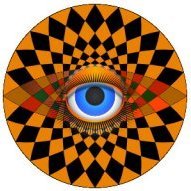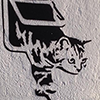
PLShutterbug
-
Posts
76 -
Joined
-
Last visited
Reputation Activity
-
 PLShutterbug got a reaction from walt.farrell in Copy selection to new image
PLShutterbug got a reaction from walt.farrell in Copy selection to new image
Thanks, that was it. I was working with an Image layer rather than a raster layer. Using Copy Flattened, then Paste into my new document, got me the result I need.
I didn't even realize this was a thing. I know about background layers, and have added layers, and have created raster layers, but have never considered the real differences between them. I'll have to study this. It might solve a bunch of other frustrations with Photo.
-
 PLShutterbug got a reaction from Oufti in Copy selection to new image
PLShutterbug got a reaction from Oufti in Copy selection to new image
Thanks, that was it. I was working with an Image layer rather than a raster layer. Using Copy Flattened, then Paste into my new document, got me the result I need.
I didn't even realize this was a thing. I know about background layers, and have added layers, and have created raster layers, but have never considered the real differences between them. I'll have to study this. It might solve a bunch of other frustrations with Photo.
-
 PLShutterbug got a reaction from firstdefence in Imported PDF page does not render properly on print
PLShutterbug got a reaction from firstdefence in Imported PDF page does not render properly on print
That's exactly what I did, and I worked on the problem page first since it was the last I copied and then chose the specific PDF page from. I think maybe that is the root of the issues I experienced.
The rest of what you say makes sense, now that you've explained it.
-
 PLShutterbug got a reaction from Patrick Connor in Affinity Photo for Windows - 1.9.2
PLShutterbug got a reaction from Patrick Connor in Affinity Photo for Windows - 1.9.2
Was using Photo 1.9.1. Tried to open a .PDF file via "Open with ..." from Windows Explorer. In the dialog box, I changed from 300dpi to 192dpi, and changed the color space to Greyscale. Photo 1.9.1 would crash - it never opened the file and the UI simply disappeared.
I then upgraded to v1.92 and opened the file from within the app using File/Open, and left the settings as they were in the original file. The file opened, I was able to add the content necessary and export it again.
I then closed Photo, returned to Windows Explorer and repeated the exact steps described above to see if 1.9.2 still crashes. I'm pleased to report that it does not.
So ... if users have reported opening PDFs caused 1.9.1or earlier to crash, they seem to have been fixed in this new version.
-
 PLShutterbug got a reaction from Old Bruce in Affinity Photo for Windows - 1.9.2
PLShutterbug got a reaction from Old Bruce in Affinity Photo for Windows - 1.9.2
Was using Photo 1.9.1. Tried to open a .PDF file via "Open with ..." from Windows Explorer. In the dialog box, I changed from 300dpi to 192dpi, and changed the color space to Greyscale. Photo 1.9.1 would crash - it never opened the file and the UI simply disappeared.
I then upgraded to v1.92 and opened the file from within the app using File/Open, and left the settings as they were in the original file. The file opened, I was able to add the content necessary and export it again.
I then closed Photo, returned to Windows Explorer and repeated the exact steps described above to see if 1.9.2 still crashes. I'm pleased to report that it does not.
So ... if users have reported opening PDFs caused 1.9.1or earlier to crash, they seem to have been fixed in this new version.
-
 PLShutterbug got a reaction from walt.farrell in Stretch 5x7 to 4x5?
PLShutterbug got a reaction from walt.farrell in Stretch 5x7 to 4x5?
I see I didn’t say that is not possible. It is a family portrait and if I crop like that I’ll chop off some ears. It’s my daughter’s family and the intended recipient isn’t picky so what I want to do is plausible for this image.
The 4x5 aspect is from bottom to top of the uncropped frame. It is not possible to crop further unless I crop into the subjects.
-
 PLShutterbug got a reaction from rt-it in Unlimited or limited updates - where's the information?
PLShutterbug got a reaction from rt-it in Unlimited or limited updates - where's the information?
My suggestion for wording:
'Our current policy for so-called "dot-release" updates, i.e.: for any 1.x to 1.y update, is that there is no charge for these updates for purchasers of the underlying major version.
'New-purchase and upgrade pricing for major version upgrades, i.e. from version 1.x to version 2.x, will be announced at the time of each major version's introduction.
'Serif reserves the right to change their pricing policies, including whether or not to charge either for dot-release or major-version upgrades, at any time.'
This wording is clear and unambiguous.
The fact that Serif hasn't introduced a 2.x product yet doesn't prevent you from creating and publishing a policy today about pricing. I think everyone realizes that companies review pricing frequently and occasionally change those policies. Adobe is a pertinent case in point.
-
 PLShutterbug reacted to Chrisburgess in Gradient tools
PLShutterbug reacted to Chrisburgess in Gradient tools
Is there a reflective gradient tool in Affinity photo, or can you suggest a way of creating a similar effect?
-
 PLShutterbug reacted to Alfred in Gradient tools
PLShutterbug reacted to Alfred in Gradient tools
Please edit your original post to provide (as you’ve done with your previous threads) a meaningful topic title.
-
 PLShutterbug reacted to lepr in Best Practices - merging images to correct exposure
PLShutterbug reacted to lepr in Best Practices - merging images to correct exposure
The correctly exposed moon layer doesn't need a mask; simply change its blend mode to Lighter Colour.
Try the Healing Brush Tool to hide the overexposed moon and halo. My screenshot shows the settings and the large source area I picked and dabbed onto a new layer. I erased a tiny spot from the healing brush layer to restore visibility of the quite bright star to the right of the moon.
Zipped .afphoto file (AP beta 1.8.3): Moon Composite.afphoto.zip
-
 PLShutterbug got a reaction from John Rostron in Best Practices - merging images to correct exposure
PLShutterbug got a reaction from John Rostron in Best Practices - merging images to correct exposure
Turns out the other image shot at the same focal length is too overexposed as well, so is not as clear. I tried various ways to get better clarity but by the time the moon gets down to actual size it is only about 100 pixels wide - not wide enough to provide much detail.
-
 PLShutterbug got a reaction from Fixx in Lighten highlight areas
PLShutterbug got a reaction from Fixx in Lighten highlight areas
This did it for me, FirstDefence!
Since my .afphoto file already had a masked area for the water, performing that action on the masked layer created a new layer that restricted the highlight action just to the water so no need to touch up the beach or outrigger wood.
Thanks.
-
 PLShutterbug got a reaction from walt.farrell in Designer: Inconsistent object sizing (aspect ratio) for Image and Vector layers
PLShutterbug got a reaction from walt.farrell in Designer: Inconsistent object sizing (aspect ratio) for Image and Vector layers
Walt,
I predict that you won't like this response. However I ask that you read it not from the perspective of a longtime Affinity user used to its vagaries but from the perspective of a long-time Windows application user used to certain conventions being honored by different software used.
But first, please don't confuse the word "ratio," which is a proportion of length to width, with "ration," which is a portion size typically less than a full measure. We are talking about ratios here, not rations.
Second, you are missing the point. Photo (and presumably other Serif products) works inconsistently. Sometimes when I change the size of something without using Shift as I do so, Photo distorts the aspect ratio compared with its original ratio; sometimes it doesn't. No other application I have ever used has behaved this way; on the contrary, the seemingly universal convention is:
If you want to maintain the aspect ratio of whatever you are resizing, you must press and hold the Shift key while changing its size. If you want the aspect ratio to change while you are resizing, don't press and hold Shift. So right out of the gate, Serif is going against decades of convention.
Your arguments about rectangles and circles likewise don't hold either. I know that a square is a rectangle with four equal side lengths, and I know that if I change the width of a rectangle without changing its height it remains a rectangle. I also know that a circle is simply an ellipse with a constant radius. However, if I start with a bitmap image or a rectangle or a square rectangle or an ellipse or a circular ellipse - or a hexagon or a star or a curve or an irregular curve or a pointmap or ... basically any other graphic element - of a given aspect ratio, and I want to change its size, I could not possibly care less whether someone has arbitrarily said that any of these things have a "natural aspect ratio." Either I want to maintain the original aspect ratio or I don't, and the application I use should work with ANY of these objects in a consistent manner, and (in my opinion) it really should follow the age-old convention that if I want to maintain that aspect ratio, use Shift; if not, then don't.
Let's bring in the snark factor a bit here and let me ask: has Serif published a list of those elements it defines as having a "natural aspect ratio" so I can know, when I begin to resize something, whether I must use Shift or not to maintain that ratio? In a quick look through their latest help guide (for 1.7.1.404), a search for the term "natural aspect ratio" brings up a single article: "isometric and axonometric grids." Searching on "resize" brings up a number of topics, including "Changing Image Size" but this topic does not cover "natural aspect ratios" nor does it mention the use of Shift or not. Right now, if I want to resize something I don't know whether or not I must use the Shift key to maintain its ratio or not, and the application does not always provide help. Further, I've noticed that for some operations, resizing the same element seems sometimes to require Shift to maintain its aspect ratio but sometimes it doesn't. This is frustrating to me and I'm sure it is frustrating to others as well.
I realize also that Serif was closed in the UK when I wrote my comment on Friday, so they have not had a chance to respond. The two responses so far seem to have come from users, not Serif employees, so I will wait for Serif to respond so I can have a definitive answer.
-
 PLShutterbug got a reaction from AffinityJules in Getting the sun right in HDR merge
PLShutterbug got a reaction from AffinityJules in Getting the sun right in HDR merge
OK. I looked again at the HDR tutorials and see what I was missing. When I click the tool at the left edge (i.e.: the overlay brush) I am creating a new Overlay Brush overlay. Then I can do stuff with that, and when I move back to the tone map tab anything I do only affects that overlay. If I then click back in the Master overlay I'm now looking at and manipulating the whole image.
More experimenting to do, but I'm on the right track now.
-
 PLShutterbug got a reaction from v_kyr in Copying from one doc to another does not preserve image integrity
PLShutterbug got a reaction from v_kyr in Copying from one doc to another does not preserve image integrity
v_kyr -
"... looking at them made me now just having cravings for such fancy chocolates"
My daughter just started a business making these chocolates. If you happen to live near Port Townsend, WA in the United States she'll be happy to whip up a dozen or so for you.
I get to help her by sharing my three lifelong passions: photography (semi-pro hobby), product marketing and promotion (profession), and eating (joy!).
-
 PLShutterbug got a reaction from SrPx in How to spec a Windows PC for Affinity Photo?
PLShutterbug got a reaction from SrPx in How to spec a Windows PC for Affinity Photo?
OK, more results. I dropped by Costco yesterday and they made me a screaming deal on a display-model Dell XPS 8930, Core i7-8700, 16GB DDR4/2666 RAM, Win10/64 and NVidia 1050ti graphics card.
Loading the same ten images as above for a focus merge, this beast took only 2:11. Cleaning up the image after the merge was significantly faster as well.
I picked up a 500GB Samsung 860 EVO SSD. I'll try that next to see what other performance gains I might get.
Is this interesting to the crowd?
-
 PLShutterbug got a reaction from stokerg in How to spec a Windows PC for Affinity Photo?
PLShutterbug got a reaction from stokerg in How to spec a Windows PC for Affinity Photo?
OK, more results. I dropped by Costco yesterday and they made me a screaming deal on a display-model Dell XPS 8930, Core i7-8700, 16GB DDR4/2666 RAM, Win10/64 and NVidia 1050ti graphics card.
Loading the same ten images as above for a focus merge, this beast took only 2:11. Cleaning up the image after the merge was significantly faster as well.
I picked up a 500GB Samsung 860 EVO SSD. I'll try that next to see what other performance gains I might get.
Is this interesting to the crowd?
-
 PLShutterbug got a reaction from Polygonius in have momentary a math-knot
PLShutterbug got a reaction from Polygonius in have momentary a math-knot
You asked, if X*2 + Y*2 = (X + Y)*4. No. X*2 + Y*2 = (X + Y)*2
let X=2.
let Y=3.
(2*2) + (3*2) = 4 + 6 = 10
(2 + 3) * 4 = 6 * 4 = 24
(2 + 3) * 2 = 5 * 2 = 10
Additionally, it is not proper to use addition to express the change in area that results from a change in size. If you have a 2 x 3 rectangle, its area is (2 * 3) = 6 square units, not (2 + 3) = 5 units. This is easy to derive and visualize using a 1 x 1 square. A square one unit on a side is 1 square unit in area. If you double the width OR the height, but not both, you are basically setting two one-square-unit squares side-by-side, so you have doubled the area to 2 x 1 (or 1 x 2) or 2 square units. If you double both, now you have a square again that is 4x the size of the original: four one-square-unit squares stacked 2 x 2, or 4 square units.
As others have said, why is this important to you with regards to photo editing?
-
 PLShutterbug got a reaction from firstdefence in How to eliminate vertical lines in panorama?
PLShutterbug got a reaction from firstdefence in How to eliminate vertical lines in panorama?
I finally got a chance to work on the photo this afternoon. I applied a new brightness/contrast adjustment layer to accentuate the lines, and then selected the background pixel layer. I then used the inpainting brush and went over the photo in vertical stripes, small stripes at a time. It looks a lot better now.









